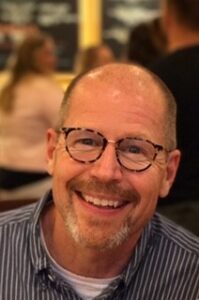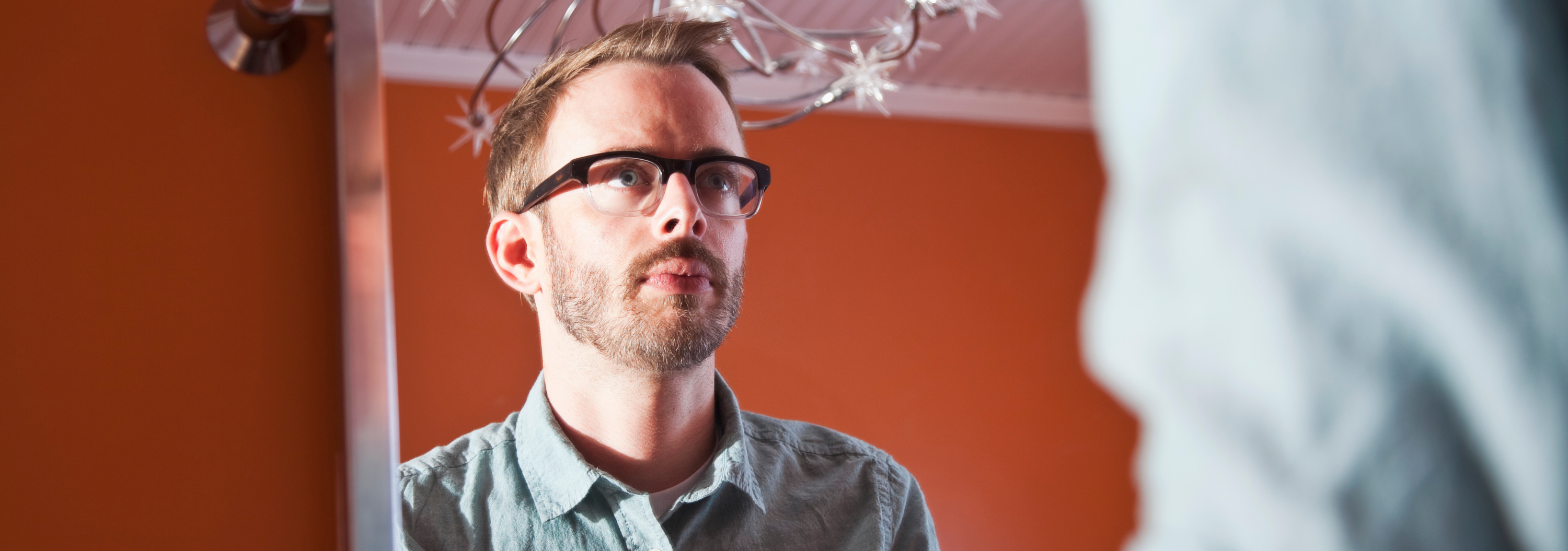Unintentional Racism: Taking Action to Reduce Hidden Bias
WHITE PRIVILEGE DOES NOT NECESSARILY MEAN THAT MY LIFE WAS EASY. IT MEANS THAT MY SKIN COLOR IS NOT ONE OF THE THINGS THAT MADE IT HARD.
 Contributed by Jim Flynn, consultant/trainer and interim supervisor, PEP Early Childhood Plus
Contributed by Jim Flynn, consultant/trainer and interim supervisor, PEP Early Childhood Plus
All too often, when they enter our doors at Positive Education Program, our kids have faced serious trauma. Sadly, racism is among the most prevalent and persistent of these traumas. It makes sense then, if we at PEP aim to ease this burden, that we do all we can to nurture an equitable community. In Dr. Martin Luther King’s vision of the beloved community “racism and all forms of discrimination, bigotry and prejudice will be replaced by an all-inclusive spirit of sisterhood and brotherhood.”
Sometimes, when I talk about bias, I encounter people who are eager to share how very “not racist” they are. And to be sure, most of them are not outwardly racist, but I sometimes wonder how often people deliberately examine their implicit biases. Unintentional racism left unexamined, after all, is racism, too. It can cause harm to those who experience it, including the kids we serve. In the interest of doing all we can to ease this burden, I would like to examine this idea further here, using my own experience as a guide.
Do Our Brains Play a Part in Creating Racism?
Possibly. The brain’s job is to sort, categorize, and make quick decisions so that we can function and keep ourselves safe. All day long, the brain sorts incoming information — good versus bad, familiar versus unfamiliar, safe versus unsafe, and so on. To do its job, the brain is making snap decisions based on our unique personal histories. The brain that keeps us safe and tells us to not go into that dark alley is the same brain that tells us to be weary of people who don’t look, or act like us. What can a person do to counter this natural tendency so that we can walk closer to Dr. King’s dream? It is possible to train our brains to be responsive rather than reactive and reduce our tendency toward bias.
Since the brain is tied to bias, we must examine our own history so that we can understand our potential for implicit bias and unintentional racism. Implicit bias is when we unconsciously display attitudes or associate stereotypes with people. When implicit biases are present, stereotyping and prejudice may dictate a person’s thoughts and actions without that being the person’s intent. Implicit bias is automatic, much like a muscle during a reflex test.
A Personal Example: Examining Implicit Bias
I grew up in Rocky River, Ohio, from 1962 to 1980. During my first 18 years, I had little contact with diverse populations. We had one Black person in my high school and no Black families in my neighborhood. I don’t recall anyone of Latinx descent attending my high school. The only way I was able to formulate thoughts about a person of color was through someone else’s lens. My view of people of color was skewed and varied depending on that lens.
In college my experiences with diverse populations became more common. Though I found myself enjoying the diversity, I still tended to associate with those who looked like me. It seemed that groups of different races or ethnicities needed their own exclusive clubs, which I didn’t understand. I kept hearing about the need to learn about other cultures and did so in a robotic way but not in a way of genuine exploration and curiosity. I was not yet truly understanding why it was important to learn about other cultures or why cultures might need their own space for growth.
Fast forward to today, after a lifetime of diverse cultural experiences and intentional study on the topic of race and culture, I think I understand those ideas. Additionally, I believe that if we are even going to come close to seeing Dr. King’s vision, we are going to have to do our part in creating loving communities. That means we have a responsibility to be mindful of our brain’s natural tendency toward prejudice. And there are concrete steps we can take to minimize unintentional racism, such as the five listed below.
1. Remain Curious and Avoid Being Certain
When anyone is telling you their life experience, listen to what they have to say. Another person’s experience is not yours to deny.
Once, when I was dining out with a friend of mine who is Black, he pointed out the bias he felt. He told me that from the time we entered the restaurant to being seated and ordering, I was the person who received the attention of the restaurant staff. Initially, I wanted to say, “Oh c’mon, this is a safe place, you are being paranoid.” Instead, a voice told me to listen. He went on to explain that the hostess addressed me, the waiter gave me the menu first, the waiter asked for my order first and the waiter assumed I was paying. He said he knew this was not intentional yet it was a glaring example of racism that he experienced, when he socialized with his White friends.
2. Seek out Diversity
It is important to actively seek out situations in which you are exploring diversity or experiencing another culture. This is especially true if you are living in a non-diverse community. A recent, decade-long study by Robert Wuthnow showed that people living in non-diverse, rural populations tend to have increased potential for racism (implicit bias). This is simply because of their lack of exposure to other cultures. Being intentional about seeking out diverse situations will help your brain be less reactive to people who look or act differently than you.
One easy way to begin exploring is through books, podcasts, or television programs. Personally, I love the cultural experience of shopping at an Asian grocery store. You can attend a religious service that is completely different from your own. Or, take a trip to another country or frequent cultural fairs. The ways to intentionally explore diversity are many.
3. Know History
I wish I could say my high school years left me with a thorough account of American history. Unfortunately, the fact is, they did not. I was taught history from the perspective of White, Anglo America. After all, White Anglo America owned the publishing companies that printed our textbooks. I was not educated about events occurring in American history prior to 1492. I did not learn about the 1921 Tulsa Race Massacre, the cruelty of the Japanese Internment camps or the genocide associated with the forced relocation of Native Americans.
Today we can do better. The true history of America should include Native American history. After all, that population flourished in our country for thousands of years before anyone from Europe claimed the United States. (If you are interested in learning more about this rich history, I recommend 1491 by Charles C. Mann.)
The true history of America also needs to explore the many facets of racism more deeply. We all must understand how systemic racism has damaged everyone. To eradicate it, we must make the problem of racism visible. If, like me, you didn’t learn about these events growing up, it’s time to learn about them now.
4. Do a Life Review with a Diverse Group As Part of a Group Study
Be reflective and thorough. Look at your own personal history. What did life teach you about people, places, and things? How did your family view education and their ability to access higher education? How did you decide on your career? What doors of opportunity opened for you and why? What was safe to you and what was not? Did you or your family have access to money? Was there violent crime in your neighborhood growing up? Were you ridiculed because of your skin color?
This type of reflection, especially in the presence of a diverse group can help one understand that the “playing field” is quite different for each individual. It can reveal that there are general themes that occur in one’s life depending on one’s race.
I recently had a conversation with one of my friends, John, who is Black. We were both talking about our experience with the police as children. In my youth, my best friend’s father was a policeman. I grew up feeling safe and protected around the police. I learned that if I was in trouble, I should seek them out. John’s lessons were quite different. For instance, he was taught that they will be harder on him because of his skin color. He should avoid them if possible because they would be looking for him to make a mistake. He was taught that he could not trust them.
5. Read a Book About Racial Healing
This essay falls short of being exhaustive. The topic of systemic racism and collective healing is HUGE and ever expanding. Although I do not overtly see myself as a racist, I can’t deny that I have biases and ethnocentric thought that sow the seeds of racism. While it may be unintentional, it is there, and I know that I am not alone. This is the reason we need to seek alternative sources for solutions to the problem of racism, and inequity. I recommend the “The Racial Healing Handbook” by Anneliese Singh. This type of literature may cause some discomfort. However, until we are able to embrace the discomfort that is associated with making necessary changes, society will be stuck.
Final Thoughts
I have worked hard to understand the concept of White privilege. If you are finding yourself “offended” by that phrase I invite you to ask yourself why. As a White, middle-class male who benefitted from generational wealth and a great school system, I had a lot of doors that opened for me. Of course, I am grateful for my fortune but also saddened by the realization that the playing field has never been even. As an adult who is gay, I have faced prejudice. As a cancer survivor I have faced adversity. As the youngest member of my family, I have experienced many great losses. White privilege does not necessarily mean that my life was easy. It means that my skin color is not one of the things that made it hard.
In closing, I invite you to familiarize yourself with the concept of the beloved community. I think you will find it easy to acknowledge that the proposals set forth by Dr. King would make the world a better place. Are you helping the world take a step away from his dream or a step toward it? In examining that question make sure you consider what direction you are stepping when you take no action, at all.
References
- https://thekingcenter.org/about-tkc/the-king-philosophy/
- The Left Behind: Decline and Rage in Small Town America by Robert Wuthnow
- Mooney & Viscontas, 2014. The Science of your racist brain. http://www.motherjones.com/politics/2014/05/inquiring-minds-david-amodio- your-brain-on-racism/
- Stanford Encyclopedia of Philosophy https://plato.stanford.edu/entries/implicit-bias/
- Perception Institute https://perception.org/research/implicit-bias/
